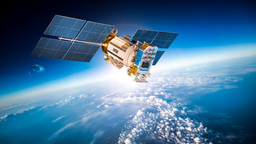Top 100 of 2024 in Physics | Scientific Reports

How GAFchromic EBT film has the capacity to detect light intensity variability with a ~ 10 μm spatial resolution, how a probable ancient nearshore zone in southern Utopia on Mars could be unveiled from observations at the Zhurong landing area, how lunar craters can be identified from Chandrayaan-2 TMC-2 images using Deep Convolutional Neural Networks, how to create a complete and robust magnetic field confinement using superconductors in fusion magnets, and how to cultivate essential ecosystems which could be used as future non-physio-chemical life-supporting systems in space.
These are the findings of some of the most downloaded articles* in Physics published in 2024 in Scientific Reports.
Congratulations to all authors who contributed to these highly valuable research papers!
*Data obtained from SN Insights, which is based on Digital Science's Dimensions.
Follow the Topic
Ask the Editor – Space Physics, Quantum Physics, Atomic, Molecular and Chemical Physics
Got a question for the editor about Space Physics, Quantum Physics, Atomic, Molecular and Chemical Physics? Ask it here!
Continue reading announcement


Please sign in or register for FREE
If you are a registered user on Research Communities by Springer Nature, please sign in